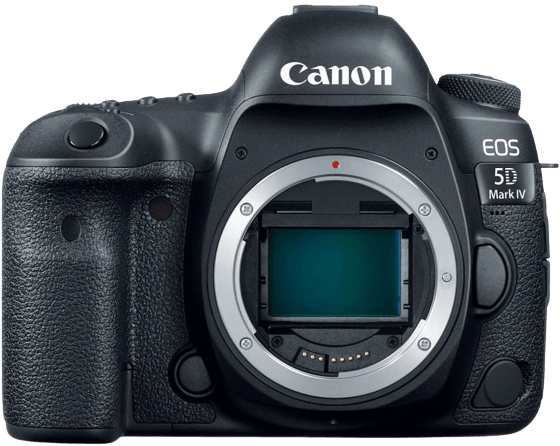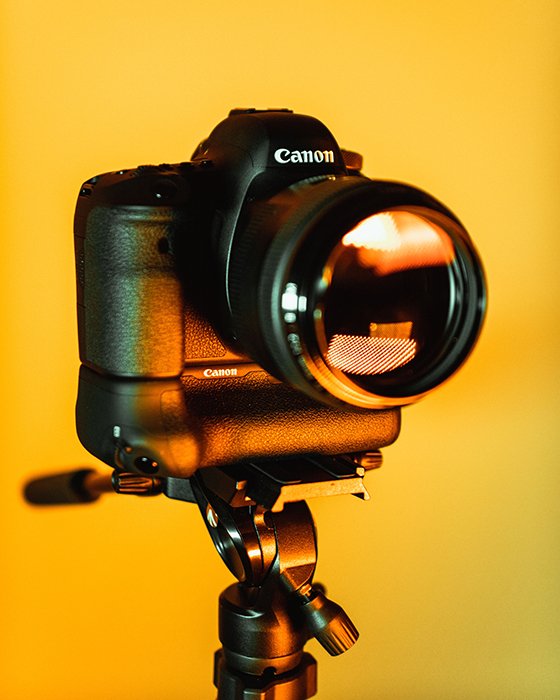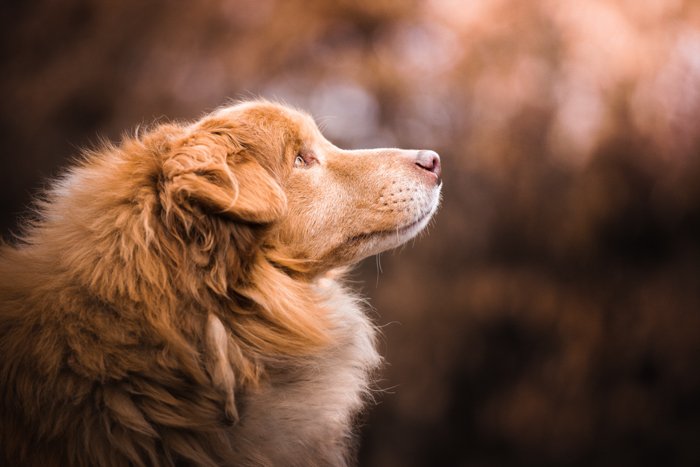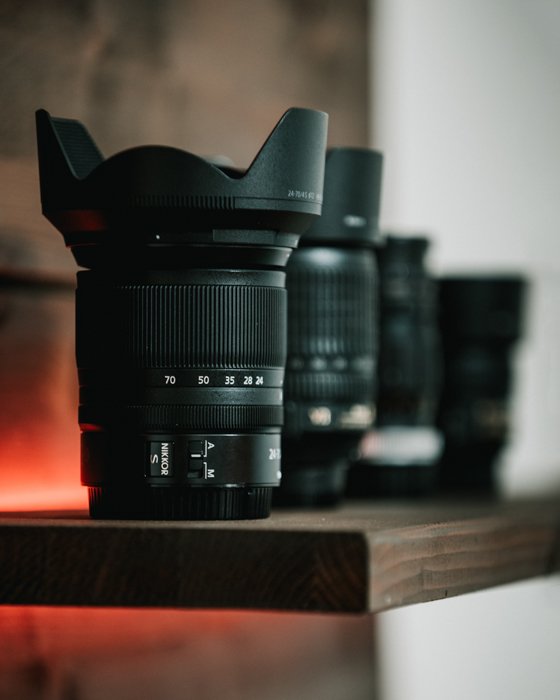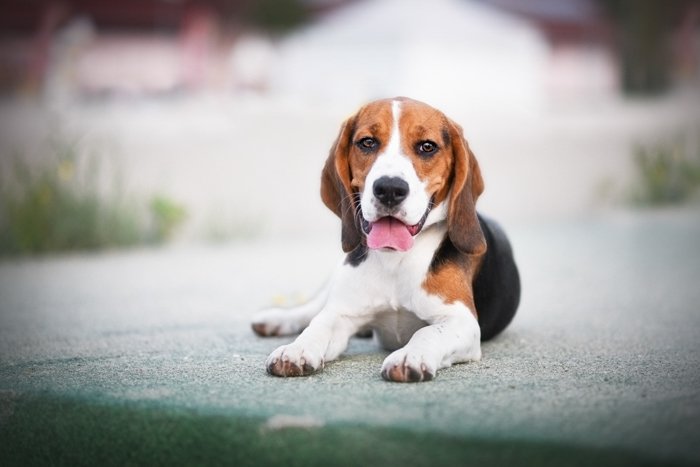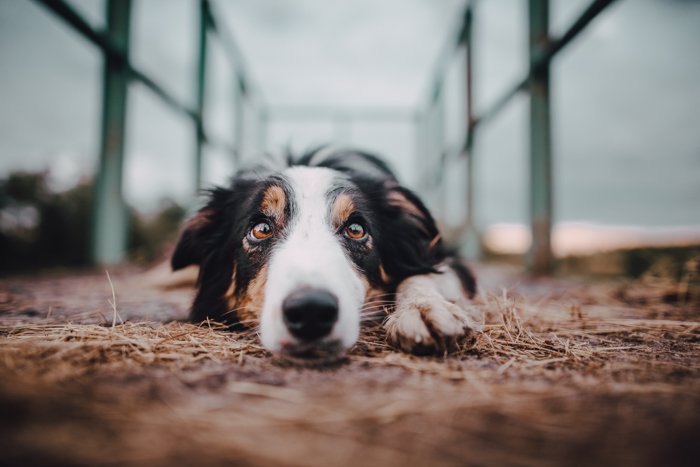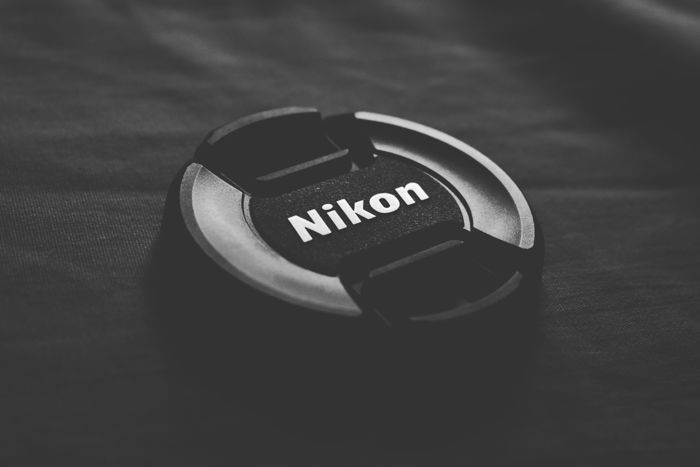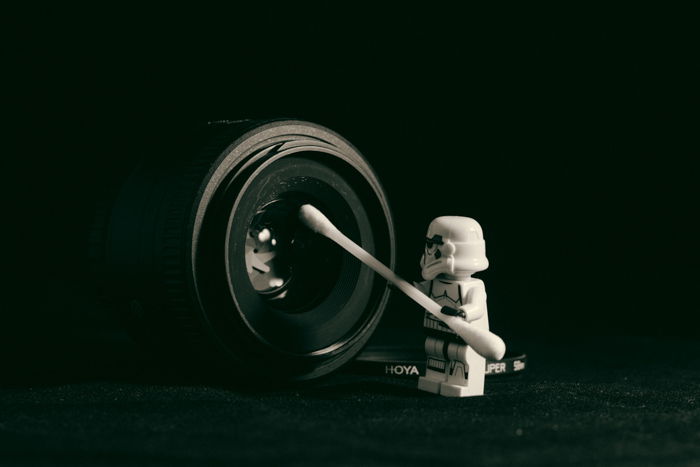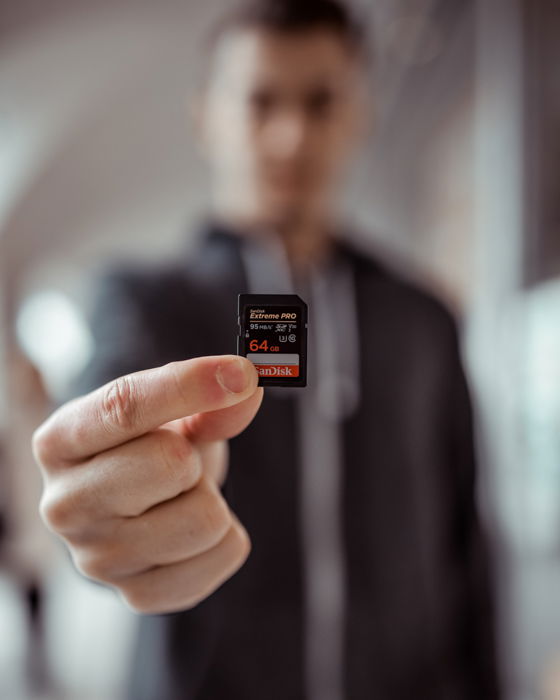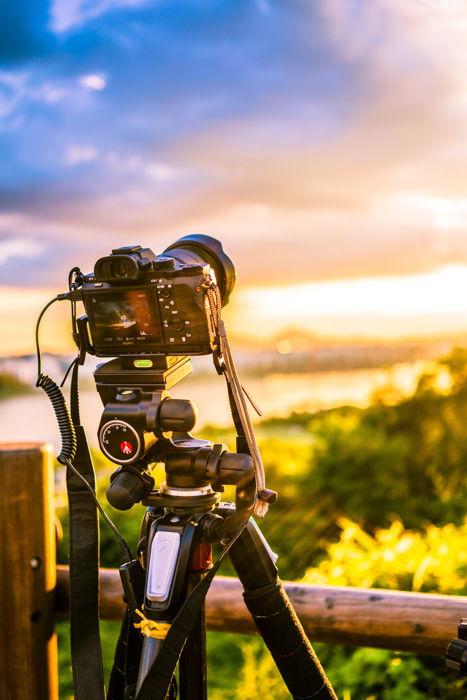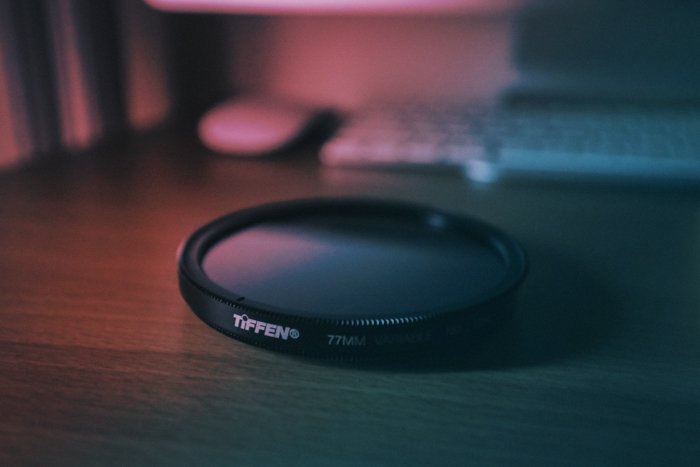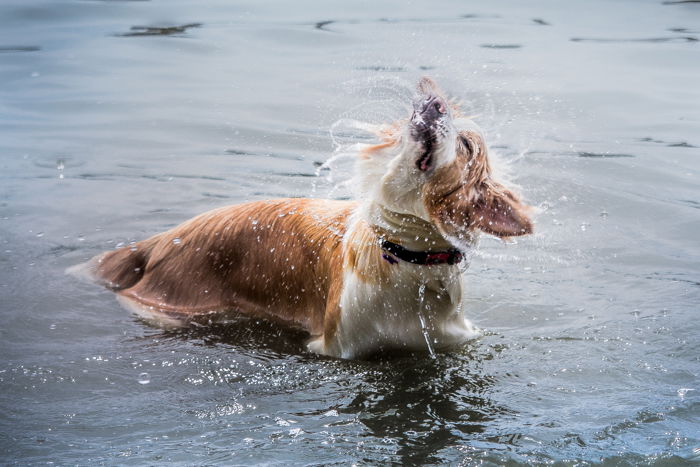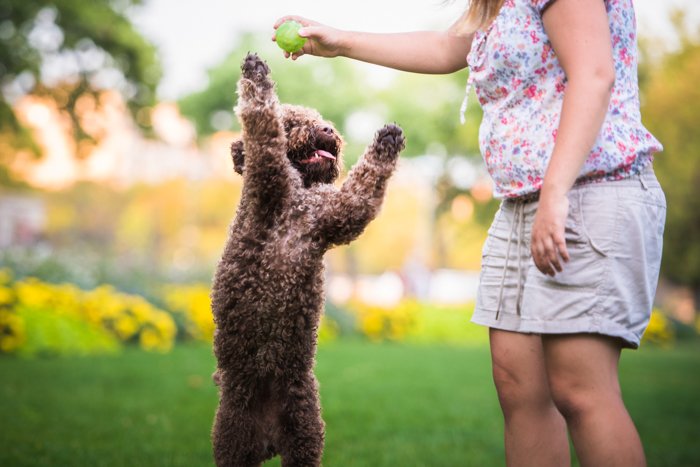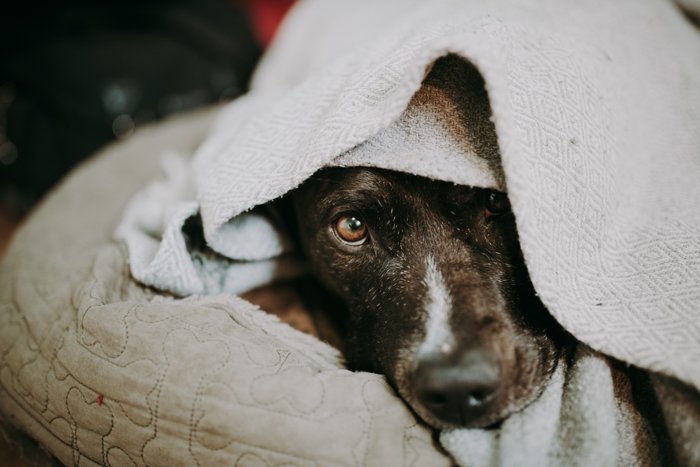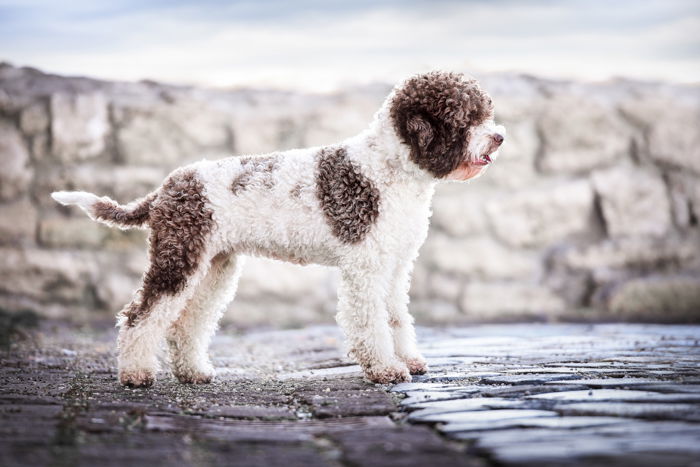Camera for Pet Photography: What’s in a Pet Photographer’s Bag
In any photographer’s bag, you’ll find a few staple items, such as a camera body and lenses. Most aspiring photographers always want to know which camera and lens to use. Here I’ll show you which ones I use when working with animals.
Camera Body
My camera of choice for pet photoshoots varies between a sport and a portrait camera, depending on the photo session’s location and end goal. If the photoshoot takes place outdoors, my body of choice is the Canon EOS 7D Mark II. It’s one of Canon’s crop sensor DSLR sports cameras. I enjoy this particular body is because of its 10 fps (frames-per-second) shooting and lightweight build. You can also use mirrorless cameras, which hold even less weight and takes up less space in the bag. For a studio setting, I prefer one of my full frame bodies, like the Canon EOS 5D Mark IV. I prefer full frame because of its higher resolution. This allows me to capture details and crop more into my images. They’re also a better fit for printing purposes.
Mirrorless cameras are great alternatives if you’re looking for fast fps. They hold much better fps ratings than DSLRs because of the electronic shutter. I would recommend Sony A7 III or Nikon Z6 if you decide on a mirrorless camera.
Lenses
I always bring one very fast fixed lens, such as the Canon EF 50mm f/1.2 L USM. A fixed lens is a much sharper and generally higher quality than a zoom lens. Due to their wide aperture, they create a shallow depth of field as well. You can’t adjust the focal length, so you must move your body to reach your desired composition. This can be a downside in certain situations, such as dog events because you lack flexibility. But at the same time, it forces you to walk around. This can often lead to a new composition or perspective ideas. I also like to carry a lens with an extremely wide aperture for shallow depth of field.
The other type of lens I bring is a variable focal length one, such as the Canon EF 24-70mm f/2.8 L USM. The biggest advantage of telephoto lenses is their versatility. You can go from a wider shot to a tight frame without having to change the lens at all. Telephoto lenses are also useful for action photography. They help you photograph distant subjects. You can sit far back and not disturb the pet while taking pictures. The downsides of zoom lenses, compared to primes, are lower optical quality and higher price. They also don’t offer as wide of an aperture as most prime lenses. While f/2.8 is the widest aperture that telephoto lenses typically have, a value of f/1.8 is very common for primes.
If a client is looking for something a bit more on the creative side, I’ll throw in an ultra-wide-angle or an artistic distortion lens for some variety! I like to use the Canon EF 16-35mm f/2.8 L IS USM or the Lensbaby Burnside 35 f/2.8.
Extra Lens Caps
To be able to fit all my lenses into an efficient bag, I carry them all unattached. This means having caps for the lenses and camera body.
Camera Accessories
Besides a camera body, appropriate lenses, and lens caps, it’s essential to carry helpful accessories. Working with animals has its challenges, so I always try to prepare for anything. I take cleaning kits, tripods, filters, and other things that help me do my job well.
Camera and Lens Cleaning Kit
Dogs, cats, and even small critters are very messy. If they can’t find a way to get you dirty, they’ll find a way to make your equipment or shooting space dirty. You’ll be cleaning off your cameras and lenses, backdrops, and even yourself a lot. Having cleaning supplies with you is always a must, especially with animal photography. Most basic camera cleaning supplies include a variety of useful tools. These can be microfiber cloths, lens cleaning solution, lens cleaning pen, lens cleaning paper, and a bulb air blower. You need to be able to remove dust, dirt, fur, and slobber from your equipment as soon as possible. This will save the glass or electronic components from becoming damaged.
Extra SD Cards and Batteries
Possibly the worst thing that could happen at your photoshoot is that the battery dies. Even if you have a battery grip, keep extra fully charged batteries with you at all times. On the off chance that I mistake which extra battery I charged, I also invested in a car charger for my DSLR batteries. There are battery pouches available for safekeeping. Another common photographer mistake is running out of space on your memory card. Or, worse, having a corrupted card that ruins your photoshoot. Always carry extras, and if your camera has a dual card slot, take advantage of that. Find a sturdy card case to make sure they aren’t accidentally damaged.
Tripod
Tripods are inexpensive and invaluable in their use. I prefer to use my hands rather than a tripod or monopod. But, I have encountered a slew of situations in which a tripod really was necessary. These useful pieces of equipment don’t have to be large and bulky, they can be light and portable. I always keep two in my car, one short and one large tripod up to seven feet. When shooting in a studio, a lot will depend on a tripod because of the artificial lights. Tripods may or may not break on set, so have some extras! Nothing is more embarrassing than being unable to complete a photoshoot because your tripod leg snapped.
Filters
A neutral density filter is a piece of glass that goes in front of your lens. It reduces the amount of light that enters the camera. One of its purposes is to enhance your desired aperture and shutter speed combination. With this filter, you won’t have to worry about it being too bright outside and overexposing your photos. Not all sessions take place in ideal lighting, so having an ND filter can help in post-processing. You’ll later have endless flexibility for client sessions. You can also buy a UV filter to protect your lens’s glass. It does not change the image result. Instead, whatever happens to the lens, the filter will save the glass from scratching or breaking.
Waterproof Casing
I live in sunny California. But, even here the weather can be unpredictable. You may end up in a situation where your equipment might get wet. Have a waterproof case or bag with you. Nothing’s worse than the elements costing you thousands in repairs. You can also get silicone or cage cases, depending on how much will the camera be in contact with water.
Extra Accessories
With pet photography, you must think beyond the essentials and helpful extras. You want your four-legged friends to be happy. Take toys or treats, tape, towels, or other handy items. All these and more will make your job easier.
A Small Squeaky Toy and/or Treats
Toys and treats are must-haves for those facial expressions and happy ears! It may surprise you how many pet owners forget these essentials when they rush out to meet you for a photoshoot. It’s always better to have some for those situations. I personally like squeaky toys or a toy that rustles. Be sure to ask the pet owner if their best friend has any food allergies before offering treats.
Tape
The golden rule is that something will likely break. What’s a great way of mending a break on the spot? Really good tape! I always keep tape in my car so I’m prepared. Sometimes you need to hang something up on a wall or attach an object to another object. For flat surfaces, tape is your best friend. I prefer to carry a mix between masking tape and packing tape for whatever needs arise.
Metal Clamps
Metal clamps are just as important! For surfaces that you can’t tape, these clamps are helpful. They’re useful for putting fabric up as backdrops, too. Just throw a bag of these into the trunk of your car and you’re set.
Scissors
Scissors are another accessory for those random needs. There has yet to be a photoshoot in which scissors have not come in handy! They help trim off threads or open packages.
Towels
It took me quite a while to start carrying a towel with me for pet shoots, and that was a mistake! You’ll find that a towel has many uses for pet shoots. These include wiping off drool, cleaning furry coats, or creating a comfortable seat for your subject. Towels also have many uses for you. They can act as a clean surface for your gear.
Notebook and Pen
Paper and a writing utensil will always prove their worth, especially at photoshoots. Keeping notes on a session, a client’s needs, or any other information is helpful for future shoots.
Cell Phone Charger
We depend on our cell phones for absolutely everything. They help us contact our clients, use a navigation system, post teaser shots from photoshoots, and get paid. A cell phone is a piece of technology none of us can live without. Don’t forget to grab a charger!
Business Cards
Having extra business cards for your client to hand out to their friends is an excellent marketing idea to get more photoshoots.
Conclusion
Even as an experienced photographer, it is easy to forget important accessories when preparing for a photoshoot. It can come in handy to have a checklist of what you need on each session. Now that you know what essentials are in my bag, you can prepare your own and keep improving your pet photography! If you liked this article, read our post on how taking photos of pets will make you a better photographer!
